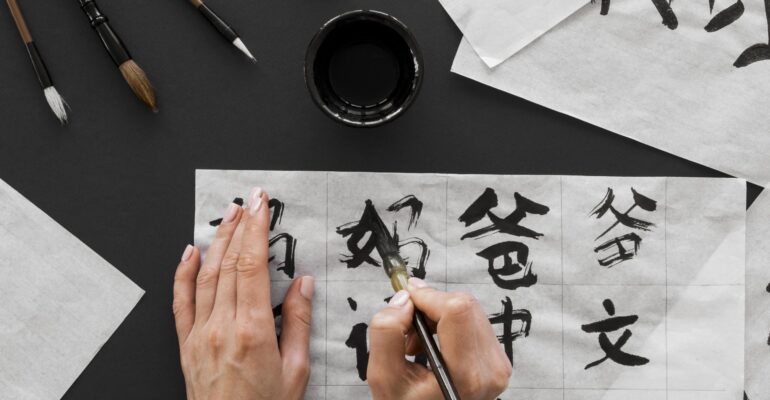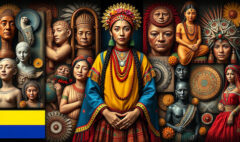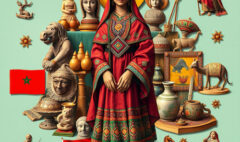Introduction to Japanese Traditional Arts
Introduction to Japanese Traditional Arts
Japanese traditional arts are a beautiful tapestry of centuries-old practices, shaped by deep cultural values and an appreciation for harmony, beauty, and mindfulness. These arts are often steeped in spirituality, particularly Zen Buddhism, and have evolved over the years, but they still hold a strong connection to their roots. Let’s dive into some of these arts—but I’ll spice things up by not sticking to every tiny historical detail because that might make it feel a bit too rigid, right?
Ikebana (生け花) – The Subtle Art of Flower Arranging
Think of Ikebana as flower arranging—but with a soul. It’s not about tossing some colorful blooms into a vase, oh no! It’s about a delicate balance between nature and the human hand, creating something almost… poetic. The idea is to reflect the natural world, and in doing so, reflect our inner world. No clutter, just balance.
– Roots: This practice has roots back in the 7th century, originally an offering to Buddha. So, there’s a deep connection to the spiritual realm.
Tea Ceremony (茶道, Sadō) – Way More Than Just Drinking Tea
The tea ceremony, also known as Sadō, might seem like a simple cup of matcha, but it’s so much more. It’s like… performing a symphony where every gesture matters. It’s about being present, appreciating the fleeting moment, and fostering a connection with others. Think of it as mindfulness in liquid form.
– Zen Vibes: The ceremony emphasizes simplicity, respect, and a kind of quiet elegance. The whole thing is based on “Ichi-go Ichi-e,” which essentially means: “This moment will never happen again, so let’s make it count.
Calligraphy (書道, Shodō) – More Than Just Fancy Writing
Shodō, or Japanese calligraphy, isn’t just about putting ink on paper—it’s a way of expressing the artist’s very essence. Every stroke of the brush is meant to flow from the heart and reflect the artist’s inner state. Even the mistakes are part of the beauty (just like life, right?).
– Philosophy: It’s a meditative practice, something that connects the spirit of the artist to the brush and onto the page.
Origami (折り紙) – The Magic of Paper Folding
Origami is like the ultimate art of transformation. You take a simple sheet of paper and turn it into a crane, or a flower, or who knows what. No scissors, no glue, just your hands. It’s a bit of magic.
– Philosophy: It’s all about turning something simple into something complex, yet keeping it humble. There’s beauty in that, don’t you think?
Noh and Kabuki – The Drama of Tradition
Noh is this ancient, slow, ritual-like theater where actors wear masks and every move is deliberate. It’s deeply symbolic and drenched in tradition—think of it as the meditative side of drama. Performers aren’t just acting; they’re embodying something greater than themselves.
– Philosophy: It’s all about subtlety. Nothing flashy, but somehow it hits deep, like a quiet whisper that stays with you.
Kabuki (歌舞伎)
Now, Kabuki is Noh’s wild cousin. Bright colors, exaggerated gestures, intense makeup—it’s all larger than life. While Noh is for the introspective, Kabuki is for the spectacle. There’s a reason it became one of the most popular forms of entertainment back in the Edo period!
– Philosophy: It’s loud, it’s dramatic, and it’s packed with all kinds of human emotion, from love to betrayal.
Sumi-e (墨絵) – Painting in Shades of Black
Sumi-e is Japanese ink painting, and it’s all about capturing the essence of your subject with just a few brushstrokes. It’s simple yet profound, like trying to paint the spirit of a mountain rather than just what it looks like.
– Philosophy: Less is more here. It’s not about filling the page; it’s about expressing depth with minimal effort. Kind of like a Zen koan in paint.
Kintsugi (金継ぎ) – Fixing Broken Things with Gold
Kintsugi is the art of fixing broken pottery with lacquer mixed with gold powder. But here’s the kicker: instead of trying to hide the cracks, it highlights them. The breaks become part of the story, and the object becomes even more beautiful for having been broken.
– Philosophy: Kintsugi is about embracing flaws, not hiding them. It’s a great metaphor for life—what breaks us can make us even more precious.
Bonsai (盆栽) – Tiny Trees, Big Patience
Bonsai is the art of growing miniature trees, shaped and pruned to look like full-sized ones. It’s an exercise in patience, care, and the art of balance. It’s kind of like gardening with a philosophical twist.
– Philosophy: The idea is to create harmony between nature and human intervention, but without overpowering the tree’s natural growth. It’s a delicate dance.
Kimono (着物) – More Than Just a Dress
The kimono is an intricate, traditional garment with layers of meaning. It’s not just about putting on clothes; wearing a kimono is a whole ritual in itself. The way you fold, layer, and tie it is an art form, and the patterns often have symbolic meanings tied to seasons or occasions.
– Philosophy: The kimono is all about grace, beauty, and tradition. It embodies the Japanese sense of aesthetics: quiet elegance and respect for tradition.
Final Thoughts about Japanese Traditional Arts
Japanese traditional arts are more than just crafts or performances; they’re ways of seeing and interacting with the world. They teach patience, mindfulness, and an appreciation for simplicity and imperfection. Whether it’s fixing something broken with gold or folding paper into a delicate crane, these arts offer wisdom that goes beyond mere technique. They’re not just about what’s being made; they’re about how you live while making it.











